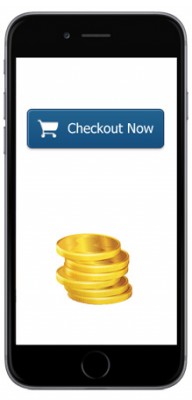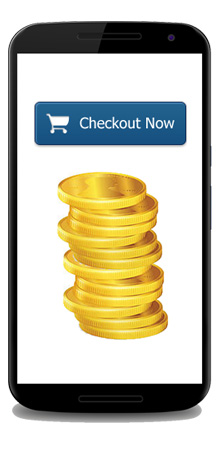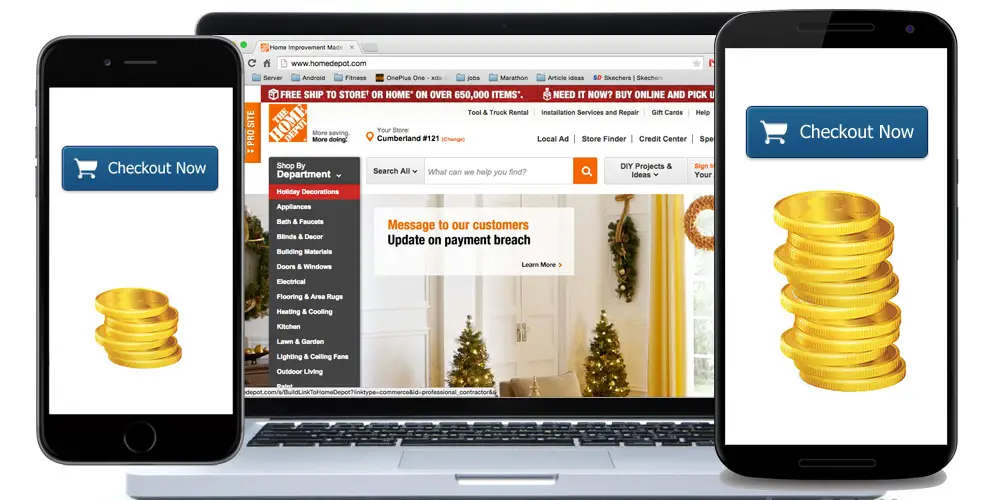The rise of mobile shopping we covered back in September has led to some pretty radical changes in retail. Mobile websites are plentiful, mobile apps have been created and shopping algorithms changed to accommodate this trend. However new research would suggest that shoppers are being charged differently depending on what device they are using.
It’s been attempted since c.2000 when it was found that Amazon and Staples were changing prices dependent on the online shopper’s location and predicted wealth. It doesn’t stop there in the “price discrimination” lottery. The researchers at Boston’s North-eastern University were able to show that your shopping habits and the device you’re browsing on will dictate the price.
This is no error on the part of the web designers either, the research shows a clear distinction in the device browsing and purchase price. Researchers used 300 people to carry out product searches on 16 large US and International retailers using a vast array of devices.
Hidden Discounts
 There were a lot of variables in the research that they attempted to keep control of. Using devices ranging from OS X based macs, to Windows PC’s running XP and 7, through to Linux desktops and mobile devices. The browsers were just as vast with Internet Explorer 8, Firefox 25, Chrome and Safari on both desktop and mobile.
There were a lot of variables in the research that they attempted to keep control of. Using devices ranging from OS X based macs, to Windows PC’s running XP and 7, through to Linux desktops and mobile devices. The browsers were just as vast with Internet Explorer 8, Firefox 25, Chrome and Safari on both desktop and mobile.
Users compared the search results, presentation of the results and the retail prices whilst browsing some of the biggest retailers around. They found that some prices displayed are not as rigid as they may seem. Home Depot, Sears, JC Penneys, Macy’s, as well as travel sites Cheaptickets, Orbitz, Priceline, Expedia and Travelocity have been charging higher prices to those using Macs or an Android devices.
Hidden Products
More strikingly, search results for some products are filtered and some products even hidden depending on what device you are using. If you’re using a mobile device, Home Depot expect to be shown search results in a higher price bracket than when using a desktop. In some cases, users were not even able to find the cheaper options unless they changed to a desktop computer.
“Unfortunately, the business logic underlying much of this personalisation remains a mystery. None of the discounts we located in our experiments were advertised on sites’ home pages, so the deals do not appear to be part of marketing campaigns,” the study’s lead author Christo Wilson
 Online travel website Travelocity was also charging more depending on device, with iOS users receiving a price $15 (£9.43) cheaper than those using everything else. Want a cheaper deak? Leave your account logged into Cheaptickets or Orbitz, and next time you log in you might be offered discounts of up to $12 a night.
Online travel website Travelocity was also charging more depending on device, with iOS users receiving a price $15 (£9.43) cheaper than those using everything else. Want a cheaper deak? Leave your account logged into Cheaptickets or Orbitz, and next time you log in you might be offered discounts of up to $12 a night.
This just does not make good business sense. Sure iOS has a much larger number of web traffic, however research would indicate that iOS users are more affluent than Android users, which should make the price model the reverse, however pricing should be the same regardless. You can’t start charging people more depending on what they are wearing or what time they come into store!
So for the best price it looks like users will have to put a bit of work in. It’s impossible to know if the price you’re seeing or even the products you’re seeing are the whole story.
Last Updated on November 27, 2018.











Comments are closed.